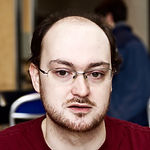So the Bay Area Deep Learning has already started streaming and it's all here. The whole schedule is here.
Saturday
9:00-10:00
Hugo Larochelle
I will cover the design of convolutional neural network (ConvNet) architectures for image understanding, the history of state of the art models on the ImageNet Large Scale Visual Recognition Challenge, and some of the most recent patterns of developments in this area. I will also talk about ConvNet architectures in the context of related visual recognition tasks such as object detection, segmentation, and video processing.
10:15-11:45
Deep Learning for Computer Vision
Andrej Karpathy
12:45-2:15
Deep Learning for NLP
I will describe the foundations of deep learning for natural language processing: word vectors, recurrent neural networks, tasks and models influenced by linguistics. I will end with some recent models that put together all these basic lego blocks into a very powerful deep architecture called dynamic memory network.
Richard Socher
2:45-3:45
Tensorflow Tutorial

Sherry Moore
4:00-5:30
Foundations of Deep Unsupervised Learning
Building intelligent systems that are capable of extracting meaningful
representations from high-dimensional data lies at the core of solving many Artificial Intelligence tasks, including visual object recognition, information retrieval, speech perception, and language understanding. In this tutorial I will discuss mathematical basics of many popular unsupervised models, including Sparse Coding, Autoencoders, Restricted Boltzmann Machines (RBMs), Deep Boltzmann Machines (DBMs), and Variational Autoencoders (VAE). I will furtherdemonstrate that these models are capable of extracting useful hierarchical representations from high dimensional data with applications in visual object recognition, information retrieval, and natural language processing. Finally, time permitting, I will briefly discuss models that can generate natural language descriptions (captions) of images, as well as generate images from captions using attention mechanism.
Ruslan Salakhutdinov
6:00-7:00 Nuts and bolts of applying deep learning
Andrew Ng
Saturday.
Sunday.
9:00-10:30
Policy Gradients and Q-Learning: Rise to Power, Rivalry, and Reunification
I'll start by providing an overview of the state of the art in deep reinforcement learning, including recent applications to video games (e.g., Atari), board games (AlphaGo) and simulated robotics. Then I'll give a tutorial introduction to the two methods that lie at the core of these results: policy gradients and Q-learning. Finally, I'll present a new analysis that shows the close similarity between these two methods. A theme of the talk will be to not only ask "what works?", but also "when does it work?" and "why does it work?"; and to find the kind of answers that are actionable for tuning one's implementation and designing better algorithms.
John Schulman
10:45-11:45
Theano Tutorial

Theano is a Python library that allows to define, optimize, and evaluate mathematical expressions involving multi-dimensional arrays efficiently, on CPU or GPU. Since its introduction, Theano has been one of the most popular frameworks in the machine learning community, and multiple frameworks for deep learning have been built on top of it (Lasagne, Keras, Blocks, ...). This tutorial will focus first on the concepts behind Theano and how to build and evaluate simple expressions, and then we will see how more complex models can be defined and trained.
Patrice Lamblin
12:45-2:15
Deep Learning for Speech
Traditional speech recognition systems are built from numerous modules, each requiring its own challenging engineering. With deep learning it is now possible to create neural networks that perform most of the tasks of a traditional engine "end to end", dramatically simplifying the development of new speech systems and opening a path to human-level performance. In this tutorial, we will walk through the steps for constructing one type of end-to-end system similar to Baidu's "Deep Speech" model. We will put all of the pieces together to form a "scale model" of a state of the art speech system; small-scale versions of the neural networks now powering production speech engines.
Adam Coates
2:45-3:45
Torch Tutorial
Torch is an open platform for scientific computing in the Lua language, with a focus on machine learning, in particular deep learning. Torch is distinguished from other array libraries by having first-class support for GPU computation, and a clear, interactive and imperative style. Further, through the "NN" library, Torch has broad support for building and training neural networks by composing primitive blocks or layers together in compute graphs. Torch, although benefitting from
extensive industry support, is a community owned and community developed ecosystem. All neural net libraries, including Torch NN, TensorFlow and Theano, rely on automatic differentiation (AD) to manage the computation of gradients of complex compositions of functions. I will present some general background on automatic differentiation (AD), which is the fundamental abstraction of gradient based optimization, and demonstrate
Twitter's flexible implementation of AD in the library torch-autograd

Alex Wiltschko
4:00-5:30
Sequence to Sequence Learning for NLP and Speech
I will first present the foundations of sequence to sequence (seq2seq) learning and attention models, and their applications in machine translation and speech recognition. Then I will discuss attention with pointers and functions. Finally I will describe how reinforcement learning can play a role in seq2seq and attention models.
Quoc Le
6:00-7:00
Foundations and Challenges of Deep Learning
Why is deep learning working as well as it does? What are some big challenges that remain ahead? This talk will first survey some key factors in the success of deep learning. First, from the context of the no-free lunch theorem, we will discuss the expressive power of deep netwroks to capture abstract distributed representations. Second, we will discuss our surprising ability to actually optimize the parameters of neural networks in spite of their non-convexity. We will then consider a few challenges ahead, including the core representation question of disentangling the underlying explanatory factors of variation, especially with unsupervised learning, why this is important for bringing reinforcement learning to the next level, and optimization questions that remain challenging, such as learning of long-term dependencies, understanding the optimization landscape of deep networks, and how learning in brains remain a mystery worth attacking from the deep learning perspective.
Join the CompressiveSensing subreddit or the Google+ Community or the Facebook page and post there !
 Liked this entry ? subscribe to Nuit Blanche's feed, there's more where that came from. You can also subscribe to Nuit Blanche by Email, explore the Big Picture in Compressive Sensing or the Matrix Factorization Jungle and join the conversations on compressive sensing, advanced matrix factorization and calibration issues on Linkedin.
Liked this entry ? subscribe to Nuit Blanche's feed, there's more where that came from. You can also subscribe to Nuit Blanche by Email, explore the Big Picture in Compressive Sensing or the Matrix Factorization Jungle and join the conversations on compressive sensing, advanced matrix factorization and calibration issues on Linkedin.








No comments:
Post a Comment